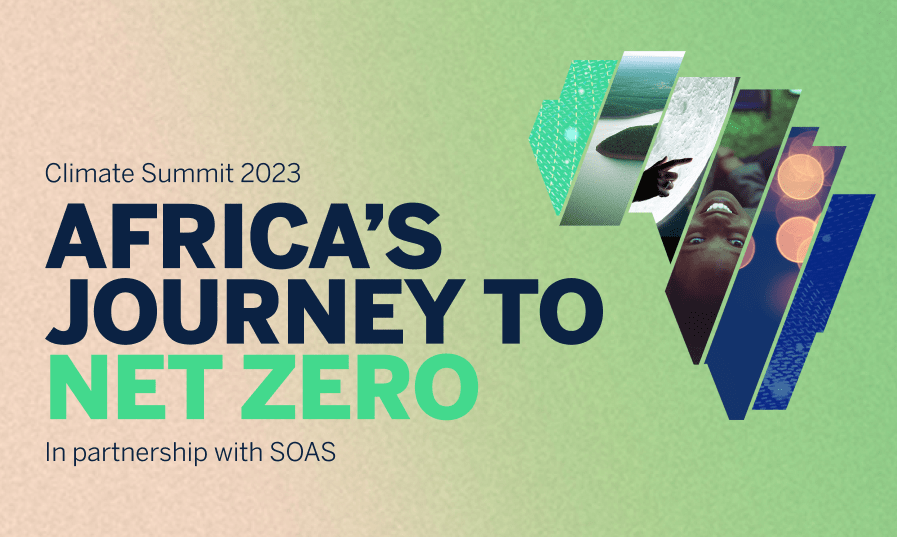Standard Bank Group sustainability matters experts Vincenzia Leitich and Dr Penny Byrne showcased their thought leadership in the media this quarter.
The revolution in Africa’s energy sector

Vincenzia Leitich, Executive: Energy & Infrastructure at Standard Bank, spoke to News24 about the positive changes for power sector policy that have been ushered in by global reforms and the unprecedented levels of load shedding in South Africa.
‘There’s been a lot that’s happened over the last couple of years,’ she said, pointing to reforms that include the removal of the licensing threshold for private generation facilities and the establishment of the National Energy Crisis Committee (NECOM), which has been tasked with coordinating the implementation of South Africa’s Energy Action Plan.
‘Some of the other changes that are going to happen this year are the Market Code, which will be really important when the NTCSA (National Transmission Company of South Africa) is spun out of Eskom,’ she added.
The Market Code provides for the purchasing and selling of electrical energy by participating generators. ‘That will allow for trading of electricity, for more private power participation, and the ability for more generation to come online and into the grid,’ Leitich explained. ‘There will be more private power generation and an increase in trading. Additionally, because of the transmission system and the ability to wheel power, that means there should be fair and transparent access to the grid, which levels the playing field in terms of power generation.’
Leitich also highlighted the opportunity for power aggregators, which has emerged with the amendments to the Electricity Regulations Act (ERA). ‘Previously, smaller power users were excluded from procuring private power through utility-scale, expensive Request for Proposals (RFPs),’ she wrote in a widely quoted thought leadership piece co-authored with Standard Bank’s Head of Power, Rentia van Tonder.
‘However, power aggregators now allow smaller-scale electricity users to access private power without launching their own RFP,’ she added. ‘Power aggregators source renewable energy from various generation assets (either through owning the generation asset themselves or procuring power from an Independent Power Producer), such as wind and solar, and sell it to multiple off takers.’
One of the offshoots of sector reform has been a more open collaboration between the government and the private sector to create more sustainable power generation in the country.
‘We’ve seen that from the start of independent power producers (IPPs) in South Africa, there’s been a lot of engagement. There’s been a lot of collaboration between the private sector and the government sector,’ she said.
‘At Standard Bank, through our sector focus, we’ve adopted a proactive approach to partner with our clients to develop new ideas and to be future-ready, as market reforms are underway,’ Leitich continued. ‘Our clients seek flexible, cost-effective, sustainable solutions to support their long-term growth ambitions. Understanding the current market challenges (including timing) and future demand-and-supply dynamics is crucial to success.’
The pursuit of sustainable growth in South Africa’s energy sector requires bold vision, strategic partnerships, and innovative solutions. Standard Bank is well-positioned to lead the charge towards a brighter and more sustainable energy future. ‘By harnessing the power of collaboration and innovation, we can build a resilient energy ecosystem that drives prosperity and progress for generations to come,’ Leitich concluded.
Agri sector feels the heat from climate change.

Dr Penny Byrne, Investment Analyst: ESG and Climate Change at Standard Bank, wrote a widely republished thought leadership article about the negative impacts of bad weather on South Africa’s summer crops.
The local soft commodities outlook has given us whiplash this season,’ she wrote. ‘We started out rather bearish on the summer crop outlook since El Niño usually results in dry conditions over the summer-rainfall regions across southern Africa. However, rainfall was merely average across most of the crop-growing regions in South Africa in the early part of the season – yet we were optimistic that South Africa would see another bumper crop. That is, until February when a flash drought set in during a crucial time in the growth of the summer crops. The dry conditions have been worse across the western part of the maize belt, which has resulted in a spike in SAFEX white maize prices.’
The Crop Estimates Committee (CEC) estimates that South Africa will produce 14.3 million tons of maize in 2024, compared with 16.4 million tons in 2023 (the second-largest crop on record). ‘Domestic consumption of maize is below 12 million tons, so, even though yields are expected to be lower this year, South Africa should still have enough maize to cover local consumption, and with some in hand to export,’ Byrne wrote. ‘This would support many of our northern neighbours, having had a trying growing season due to adverse weather.’
High demand typically means high prices, but – as Byrne pointed out in an interview with CNBC Africa – the agri sector isn’t expecting any windfalls.
‘The farmers are definitely enjoying the high prices, but they’re expecting terrible yields as a result of this drought,’ she said. ‘And unfortunately, their input costs have been running very high over the past few years. A lot of people will talk about how fertiliser costs have come down, but they’re still well above pre-pandemic levels. So, it’s still definitely a struggle for the farmers. Unfortunately, I don’t think there are any winners in this situation, despite the fact that you would think farmers would be able to sell at super-high prices and make good profits, unfortunately their input costs are very high at the moment.’
The good news is that weather watchers and analysts expect a switch to a La Niña event at the end of 2024. ‘La Niña is the opposite of El Niño and tends to bring good rainfall over the country,’ Byrne told CNBC Africa. ‘The past three summers, before this summer, were all La Niña events, and we had excellent crops during those three years. Unfortunately [there was] also some flooding.’
The situation is exacerbated by the effects of climate change. ‘Climate change just makes whatever’s happening more intense,’ said Byrne. ‘So, when you have too much rain, you have way too much rain, and when you have too little rain, you have too little as well as incredibly hot temperatures, which of course the crops also don’t enjoy.’
Byrne left some good news for CNBC viewers. ‘Thankfully, seed technology is improving so much, year on year, that they’re able to deal with these drier and hotter conditions better than they were,’ she said. ‘If we were still planting the same seeds that we were 10 years ago, we would be in a much worse position right now.’













